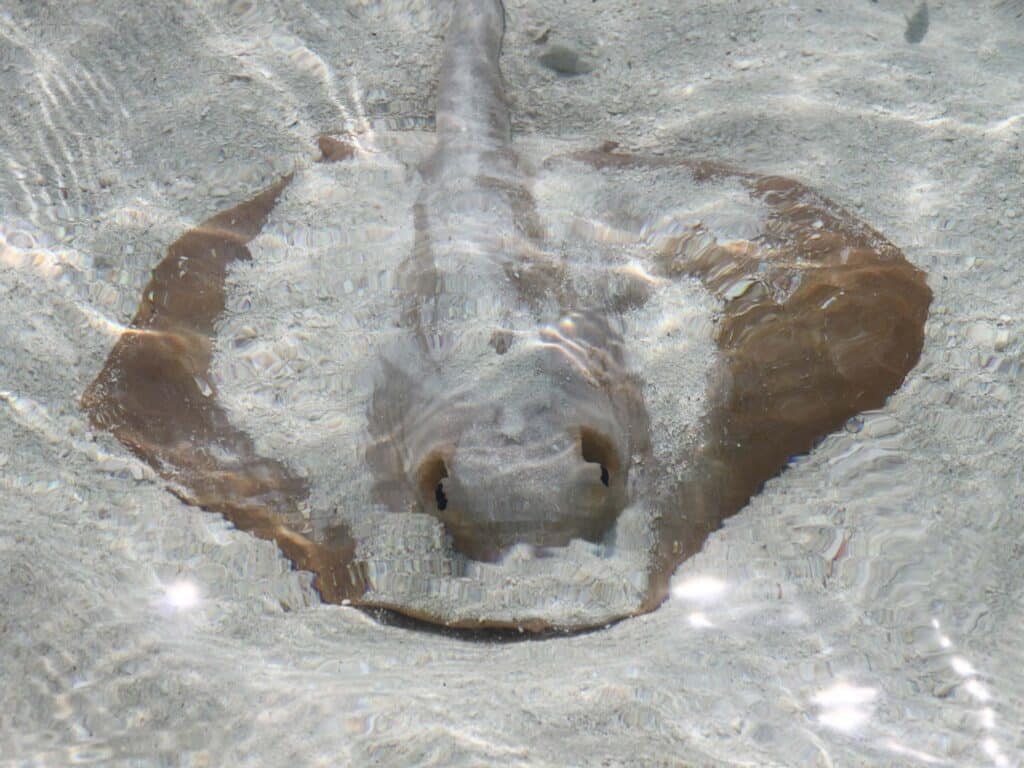
If you’re a resident or a frequent visitor to the beaches of Florida, you’ve probably heard of the “Stingray Shuffle.” That’s the advice to slide your feet out one at a time while exploring the water along the state’s shores.
The traditional thinking is that this maneuver scares away any nearby stingrays, who tend to congregate in the shallow, warm waters along the shallow waters of the Gulf of Mexico and the Atlantic Ocean.
Does the Stingray Shuffle work?
Does it actually work? Researchers at the University of Florida say an emphatic yes.
“Be sure to shuffle even if you’re wearing a wetsuit or boots since a stingray’s barb is strong enough to pierce through either,” UF’s website says. “Also, remember— if you see one ray, then others could be nearby.”
Why stingrays are dangerous
Stingrays are not aggressive by nature, but the prospect of being stepped on by someone a few hundred pounds heavier can put them on the defensive. A stingray’s tail has barbs and spines full of poison. The poison isn’t deadly but it’s awfully painful.
The venom can induce nausea, vomiting, diarrhea, cramps, abdominal pain and even seizures, according to Podiatry Today.
How to treat a stingray sting
According to the experts, the best way to negate the poison from a stingray sting is to soak the affected area in hot water. Podiatry Today says the ideal temperature is between 110 degrees to 115 degrees for between 30 and 90 minutes.
Vinegar can also be used for soaking, especially if the body part is too sensitive to hot water.
If any of the tail or barb broke off and is lodged in the body, it should be carefully removed – allowing a doctor to do it isn’t a bad idea to minimize the chance of infections.
Should you urinate on a stingray sting?
There’s a popular beach legend that urinating on a stingray sting will counteract the poison. The theory goes that stingray poison is acidic, so the alkaline nature of urine helps.
It’s simply not true. Stingray venom isn’t as acidic as some people believe. Stick with hot water or vinegar. If those aren’t available, salt water can ease the pain too.
By the way, because we know you’re going to ask, urinating on a jellyfish sting doesn’t help either. According to a study by the Cleveland Clinic, it might actually make the pain worse. Soaking the affected area with hot water and applying cortisone cream is a better bet.
If you insist on a non-traditional treatment for jellyfish stings, try dabbing the affected area with a meat tenderizer or wet tea bags. You may not feel better, but you’ll satisfy your kooky aunt who insisted on a non-medical cure.
More stories like this:
- Is There a Six Flags Park in Florida?
- Is Jacksonville Really the Country’s Biggest City?
- Is St. Augustine Really the Oldest City in America?
- What is Red Tide and Why Does It Threaten Florida?
- Is Florida the Hurricane Capital of the World?
- Why is Orlando called ‘The City Beautiful?’
- What’s the Difference Between an Alligator and a Crocodile?
- Is Florida the Fastest-Growing State?









